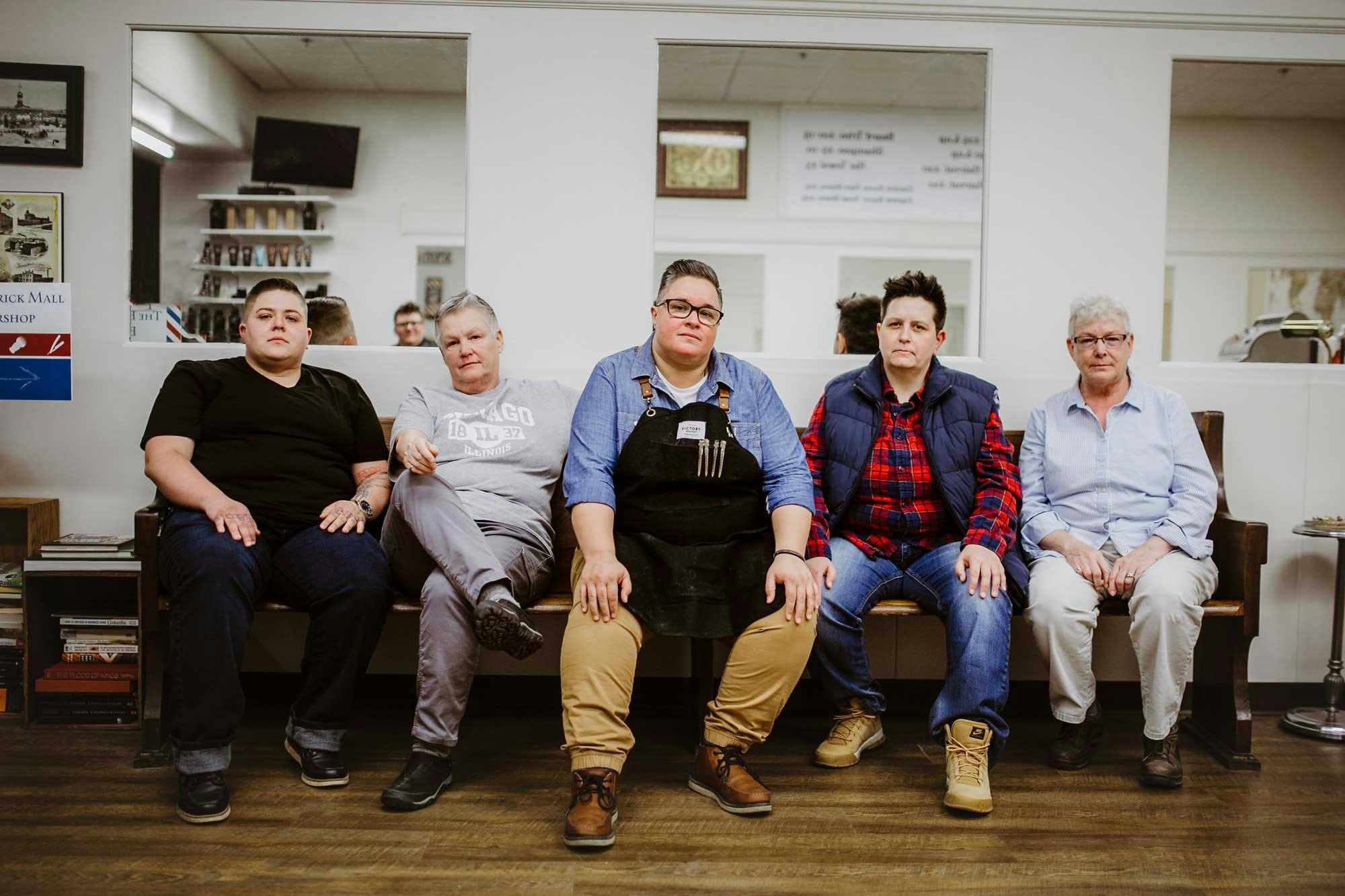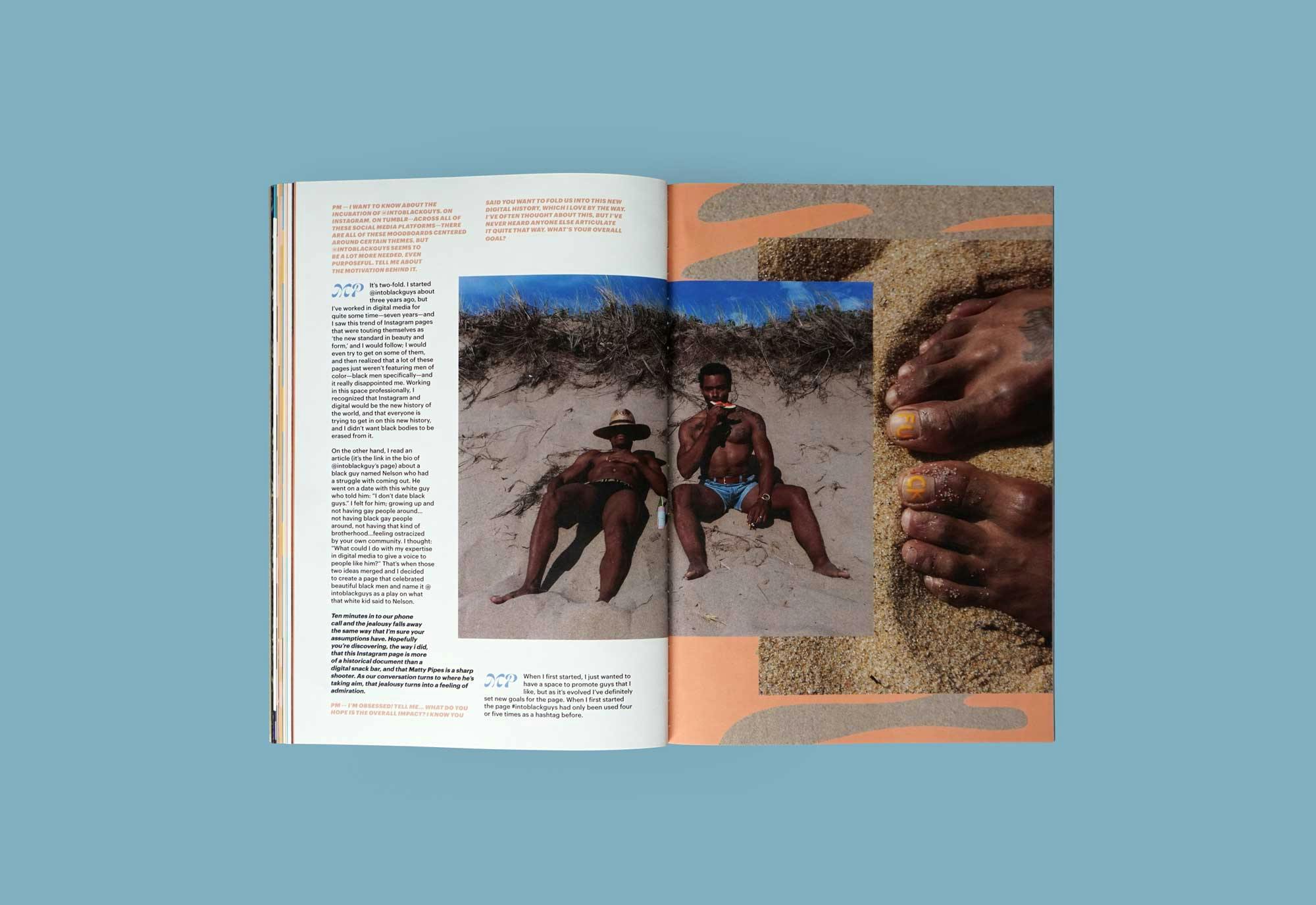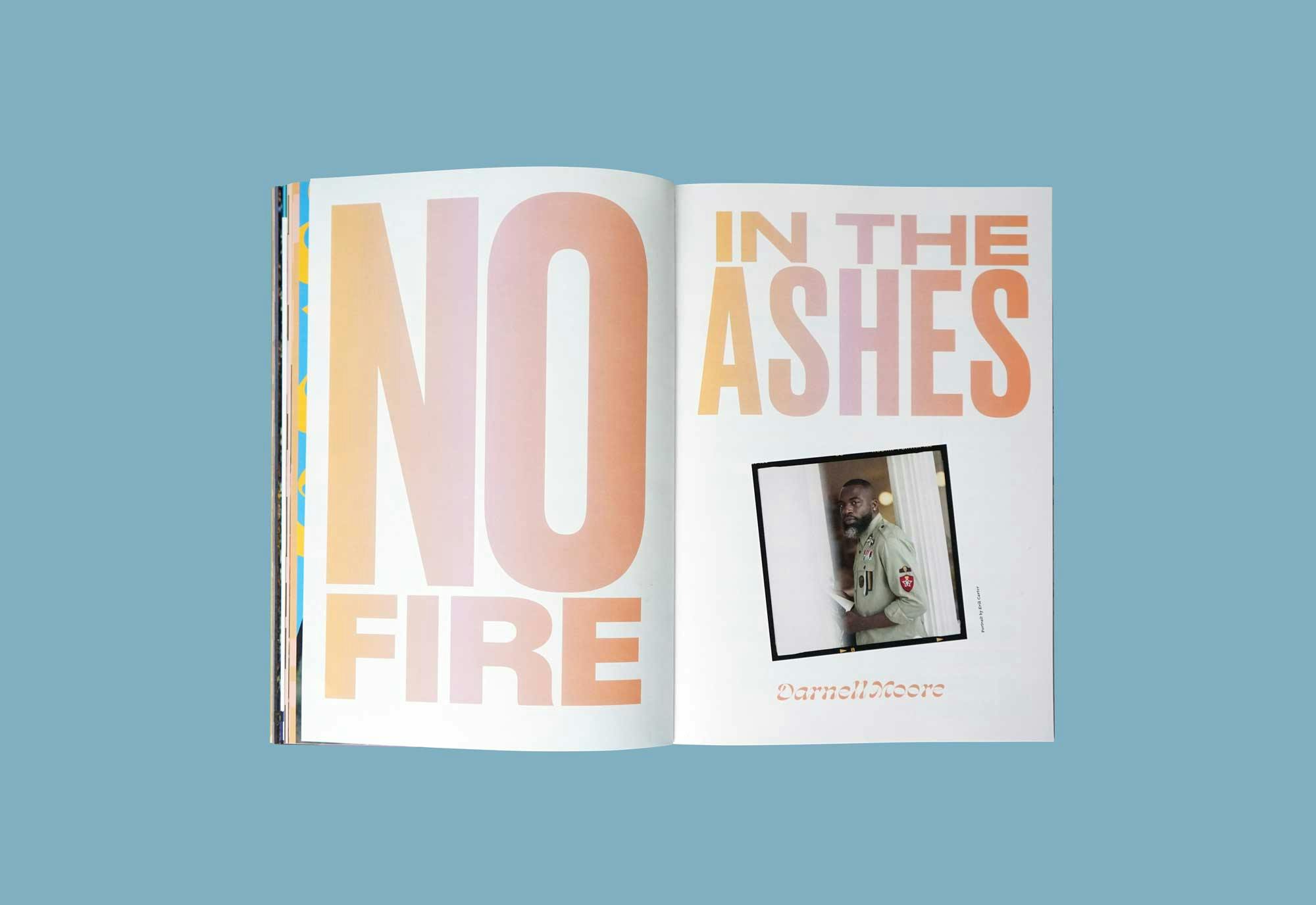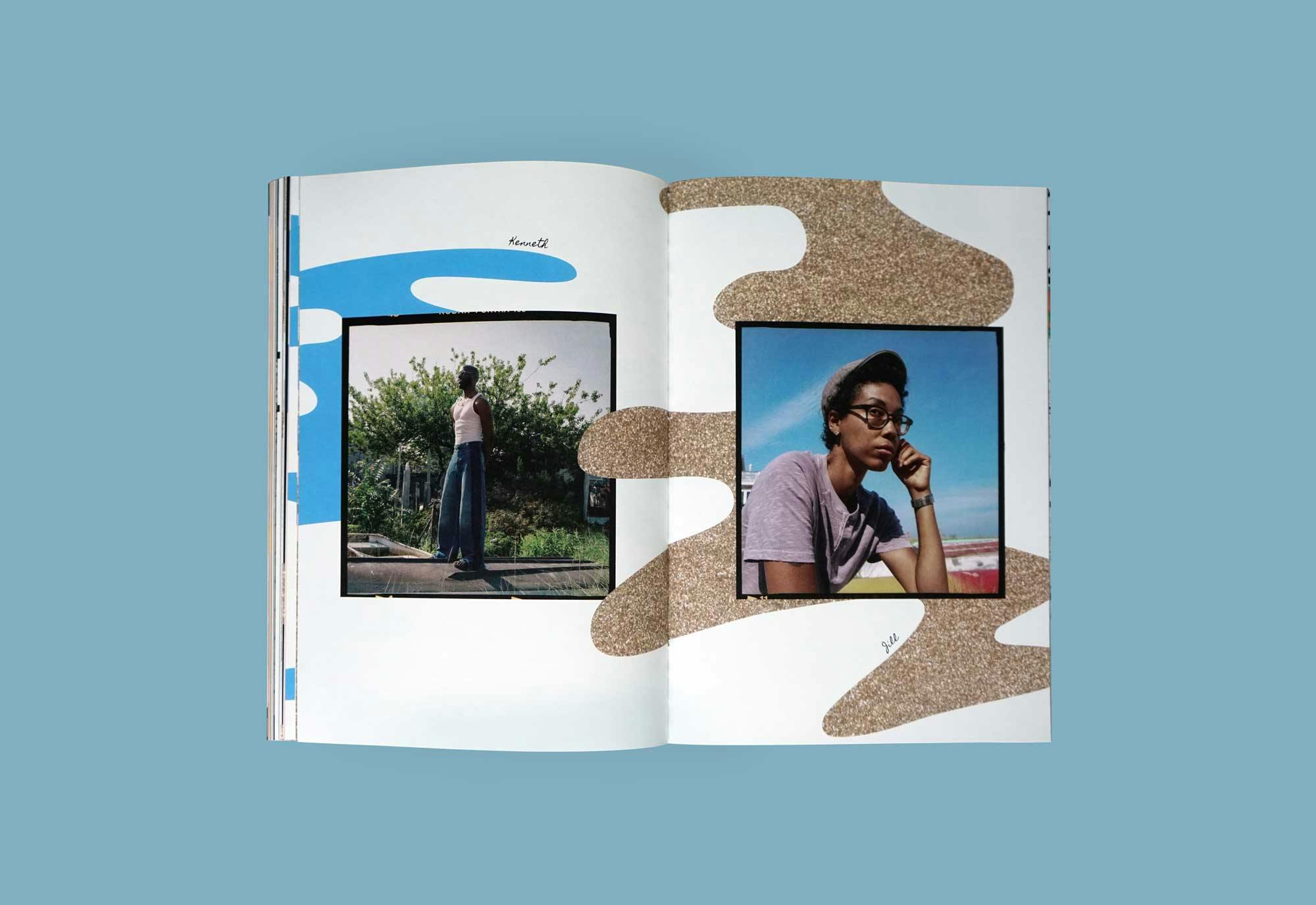“This is where I can grab onto something and feel like I’m not drowning”
Surviving as a queer publisher is more difficult than ever, but the work is rich and authentic in a way mainstream outlets can’t touch
Cave Homo was born on election day, 2016. From the start, editor Luke Williams knew that his magazine would be niche; even willfully uncommercial. The first issue was a visual essay on his childhood hero, the skateboarder Brian Anderson, who had just come out. Most of the pictures are non-explicit close-ups of Anderson’s heavily tattooed skin: wrists, toes, an armpit. They are unposed, and so tender you feel you are intruding on something. Luke had moved to New York to work at Out Magazine, and felt suffocated by the strangely manicured images of gay male sexuality on the pages there. To survive under the Trump administration, it suddenly felt vital to remain an outsider: to make something un-trendy, that reflected private desire.
“We’re waking up every day in a world that hates us and wants us dead,” he explains over Skype from the East Village. “I don’t want queer to be family friendly or fully accepted. I’m a traditional gay who would be just fine with a few less pride flags in exchange for a few more burning cop cars, a couple of parks and a bath house to cruise in.”

As Luke sought to make a magazine with a deliberately narrow appeal, some of the world’s biggest media brands set out in the same direction – to an extent. Vice, Refinery29 and Dazed regularly publish queer content, helping to bring it firmly into the mainstream. And against a background of dwindling ad sales and circulation figures, Condé Nast launched Them in 2017, an LGBTQ platform that has drawn support from Burberry, Google, Lyft and Glaad.
Ostensibly this is positive: at a time when Donald Trump is attempting to roll back civil rights protections for gay and transgender Americans, and when, in the UK, the favourite for prime minister once compared gay marriage to three men marrying a dog, it’s clearly a good thing that there is high-profile media run by queer people, dedicated to protecting LGBTQ rights. To indie publishers like Luke, though, a publisher like Condé Nast entering the fray feels cynical. “I find it oddly homophobic, actually. It’s Condé Nast reaching into the coffers of independent queer publishing, and ripping any kind of support that it could ever possibly have, to afford however many floors they have at the world trade centre — don’t they have like 10 now?”
Advertisers are happy to partner with big-name publications: they get to court the pink pound, and look ‘queer’ in a way that risks (and means) virtually nothing. But when it comes to supporting independent media that is queer in any remotely political sense, the same advertisers are simply not interested. This makes survival difficult – veteran title Hello Mr. folded in 2018, and Posture has stopped publishing in print. Luke tells me that he puts the whole $12,000 it costs to make an issue of Cave Homo on his credit card, and then just hopes to sell enough copies to pay it off. But financial instability has interesting creative consequences: as independent queer titles give up hope of becoming commercially viable in a traditional sense, they are doing something weightier, and less palatable.
One example is black LGBTQ magazine The Tenth, whose latest issue is an ambitious two-volume exploration of the American criminal justice system, created in collaboration with currently and formerly incarcerated queer people of colour. Editor Khary Septh tells me The Tenth started in 2014 as a fashion title: “The first book we were crying because we couldn’t get Thom Browne to lend us clothes.” Khary had worked as a creative director in New York for huge names like Barney’s and Swarovski, and the rejection was eye-opening. “Ralph Lauren’s got a pride campaign! Calvin’s got a Pride campaign! But you won’t see them on any independent black media’s pages because those designers just don’t touch us.”
It made him recalibrate: “At that point we knew that our mission would become a little bit greater than just showing images of marginalised people in a fashion magazine”. The Tenth switched its focus from fashion editorial, turned inwards to their community and started creating work that could never be cannibalised by media outlets with bigger budgets because they wouldn’t be able get the same access. Every issue takes a year to create, and the team spend five to six months on the road at a time travelling around America. One ambition for The Tenth’s future is to act as a kind of database, connecting abolitionist organisations like Black & Pink and TGI Justice to LGBTQ people in prison. It’s difficult: Khary describes to me the practical problems he faced making the last edition as a low-budget independent publisher paying $5 for every 10 minutes spent on the phone to a correctional facility, and $2.50 per email. But the results are extraordinary, and the magazine is growing, having built a partnership with HBO.

Some titles go further, choosing to contain their reach, and speak to their community only. Butch Is Not A Dirty Word, the world’s only print magazine dedicated to butch identity and culture, avoids advertising altogether. Editor Esther Godoy tells me over email that this is a personal project: “The first motive is the healing of my own trauma around my identity. It’s likely that I will always feel like there is something inherently and fundamentally wrong with me. That’s the impact patriarchy and social structure has on most women, particularly women who don’t conform to what is expected of them OR whom aren’t conventionally attractive… and with many (not all!!) butch folks, both of these things ring true.”
The people sharing stories in this magazine make themselves so vulnerable, that to try to sell something on the page next door is unthinkable. It means print runs and budgets are small, but, Esther explains, “There’s no shame in keeping something small, it helps keep its integrity intact, and ensures it continues to serve the people it was intended to.”
But the struggle to remain imaginative in a new media landscape can be disheartening. For Sean Santiago, editor of the New York-based title Cakeboy, it’s the fact that with queer content now deemed fashionable, all media outlets — big and small — are struggling: “Structurally we’re all working in an ecosystem that can’t sustain us, and more than that, needs to leech off of us to extract the cultural capital it takes to appear relevant and valuable to brands,” he explains. “What I keep realising is, you have to keep putting out, you keep producing and making, and at no point will anyone necessarily validate you and give you money for it. It’s much more likely that someone with more money will just steal the idea.”

The latest issue, Cakeboy’s eighth, is academic and playful. Long-form pieces interrogate queer utopias in video games; a manifesto on anti-douching argues that “good hygiene” practices have been used to vilify “immoral” acts. Personal, and deeply researched, it’s difficult to imagine Cakeboy easily copy-catted. And while the reality of making the thing might be anguish, what zings off the page, most fiercely, is a feeling of joy.
Giving up on ‘success’ has, for Sean, been freeing: “I was trying to make Cakeboy something that at its core it’s not. Now I’m drilling down into it just being this weird, crazy thing.” Surviving as a queer publisher is more difficult than ever, but the work is rich and authentic in a way mainstream outlets can’t touch, perhaps because it comes from that place of instability, and pain. As Luke sees it, Cave Homo is a life raft: “This is where I can grab onto something and feel like I’m not fucking drowning. Because that’s the way I feel in the world right now. I hope that’s what it brings to other people too. That it’s a hand sticking out of a boat into the water to grab people who are lost at sea.”
- Lead image: Cakeboy - Howin Wong photographed by Derrick Kim Lee








